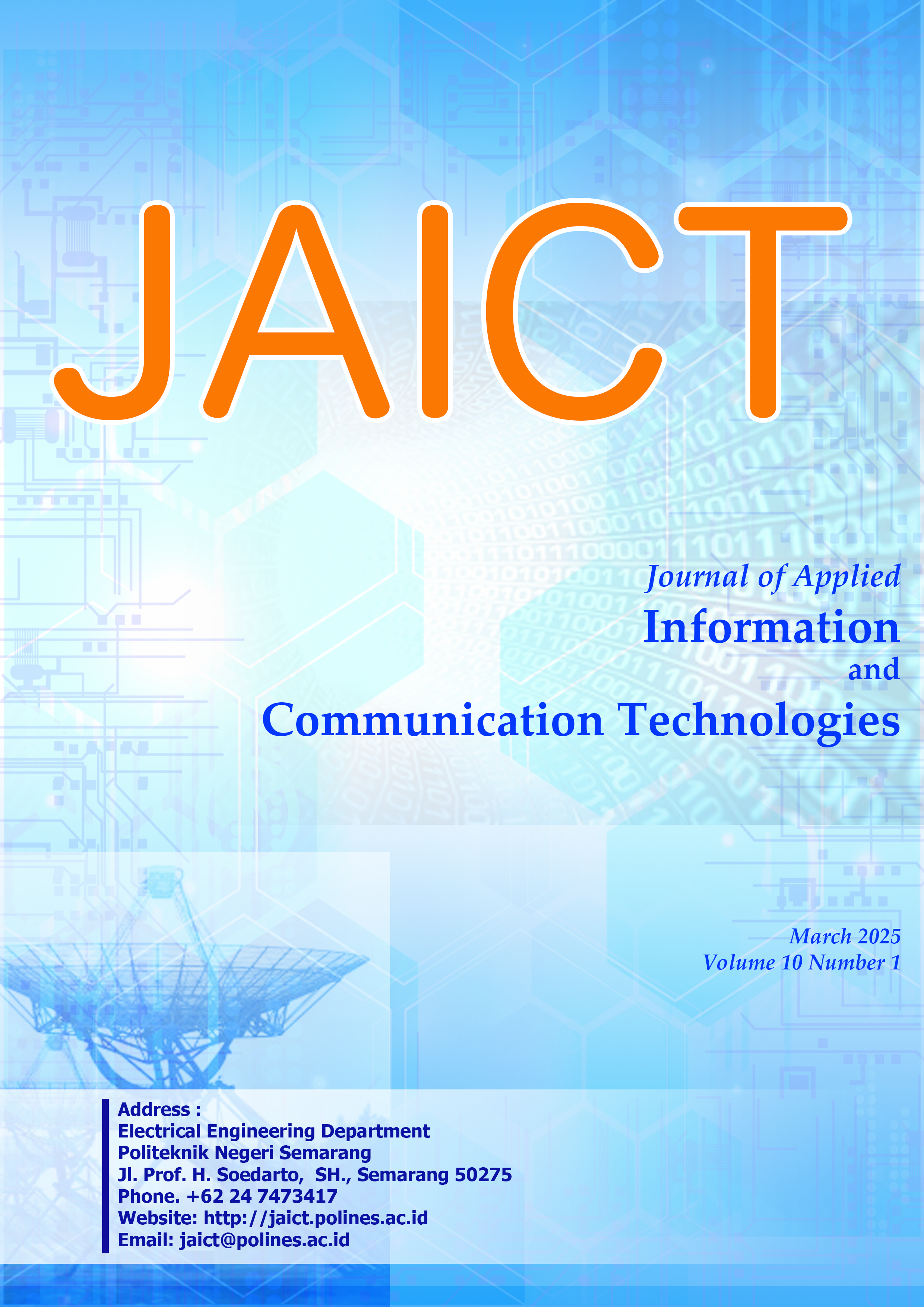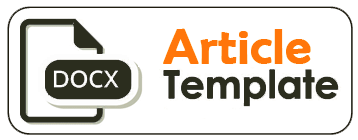Digital Flood Control Model as a Digital Practical Learning Module
DOI:
https://doi.org/10.32497/jaict.v10i1.6175Keywords:
Teaching aids, control process, digital circuitsAbstract
Abstract”” Teaching aids are one of the learning media that can be used in the learning process in the classroom or laboratory. The purpose of this media is to facilitate the understanding of the material being studied. In laboratory learning, in addition to practical modules, the development of teaching aids is needed as a case study for solving problems in the field. The teaching aid being researched is a learning module as the development of digital engineering practicals in the laboratory, specifically a digital flood control module. The module designed and created aims to teach how a flood control process can be created using digital circuits, thereby providing insights and understanding to students about the control process. The controller module reads the water level sensors set at high and low levels. When the water touches the high-level water sensor, the control output activates the relay to turn on the pump, so the water in a specific location is pumped elsewhere. When the control system reads the low-level sensor, the output deactivates the relay and the pump stops working. The water level sensor is set at a distance of 10 cm between the lower and upper limits. The volume of water pumped is 0.006 m3 or 6 liters in 30 seconds using a 12v DC water pump with a power of 25 watts.
References
Sugiartowo, Sitti Nurbaya A, “Simulasi rangkaian Kombinasional Sebagai Media Pembelajaran Sistem Digital Pada Fakultas Teknik Universitas Muhammadiyah Jakarta”, Seminar Nasional Sains dan Teknologi 2018, Fakultas Teknik Universitas Muhammadiyah jakarta, 17 Oktober 2018.
Abdul Haris. R, Muhammad Iqbal, Winda Amelia, “Pengembangan Modul Digital Praktikum Komputer Grafis 1 Dalam Format Elektronik Publication (EFUB) Untuk Meningkatkan Pemahaman Teknik Grafis Mahasiswa Desain Komunikasi Visual (Topik:Digital Imaging)”, JISIP.Vol.3 No.1, Maret 2019, pp. 224-229.
Nuralim Kadir, bambang Panji. A, Ifan Wirano, Rancang Bangun “Modul Praktikum Dasar-Dasar Teknik Digital”, Jambura Journal of Electrical and Electronics Engineering, Volume 6 Nomor 1 januari 2024.
Wulandari, A.Salsabila, K.Cahyani, T.Nurazizah, and Z.Ulfiah, “Pentingnya Media Pembelajaran dalam Proses Belajar Mengajar”, joe,Vol.5, no.2, pp.3928-3936,jan.2023.
Vicky Dwi.W, Ali Yusuf, Hendrik Pandu .P, Windasari, Atan Pramana,”Pelatihan Pengembangan Modul Digital Berbasis Kurikulum Merdeka Bagi Guru Sekolah Dasar”, Seminar Nasional Pengabdian Masyarakat 2023, Universitas Muhammadiyah Jakarta, 26 Oktober 2023, pp.1-9.
Merianti, Nehru, Wawan Kurniawan, “Development of Digital Electronics Practicum Modules on Logic Gates”, Edumaspul-Jurnal Pendidikan, Vol.7. No.1, 2023, pp 742-747.
Heru Gunawan.A, Anis Saggaf, Sarino, “Kajian Penanganan Banjir Dengan Sistem Pompa di Sungai Bendung, Kota Palembang, Jurnal Sumber Daya Air, Vol.17. No.1, Mei 2021, pp.49-58.
Downloads
Published
Issue
Section
License
Authors who publish with this journal agree to the following terms:Authors retain copyright and grant the journal right of first publication with the work simultaneously licensed under a Creative Commons Attribution License that allows others to share the work with an acknowledgement of the work's authorship and initial publication in this journal.
Authors are able to enter into separate, additional contractual arrangements for the non-exclusive distribution of the journal's published version of the work (e.g., post it to an institutional repository or publish it in a book), with an acknowledgement of its initial publication in this journal.
Authors are permitted and encouraged to post their work online (e.g., in institutional repositories or on their website) prior to and during the submission process, as it can lead to productive exchanges, as well as earlier and greater citation of published work (See The Effect of Open Access).






